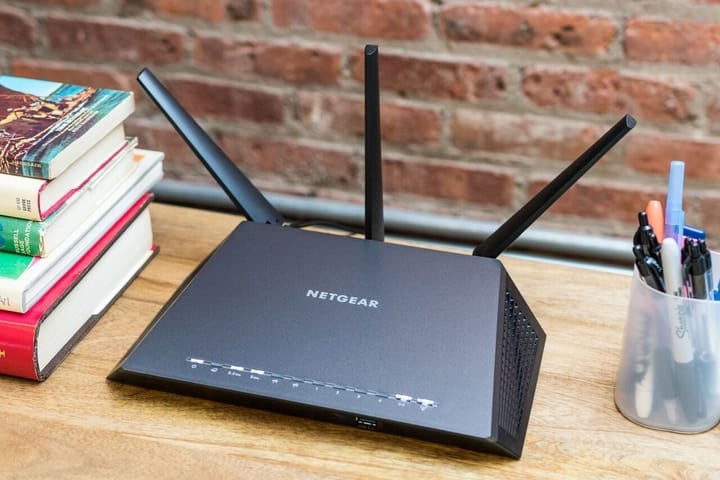12 Steps to Securing your Home Wifi Network

You are not condemned to settle for Wi-Fi as left by the installer of your Internet provider. We explain twelve things you can do to improve the coverage, stability, and speed of the signal in your home.
Are you satisfied with the Wi-Fi in your home? The most common thing is not to touch anything about the router installation since the technician walks out the door and also that the list of connected devices increases and, after a while, you notice that it is not as fast or does not perform as well as when beginning. Before you switch providers or to a higher rate, there are a dozen things you can try that will work for you. We explain what they are.
Table of Contents
Locate your router well
This is a fundamental question that is often underestimated. When a router is installed, it is usually placed in the place of the house where the fiber cable enters from the outside, and many times it is not the best.
Placed at the entrance, the farthest rooms will receive a worse Wi-Fi signal than the closest ones, and, depending on the size and number of physical obstacles that the Wi-Fi network will encounter, it will be better or worse.
The ideal location for the router is in the center of the house, with the fewest obstacles around it, and it is worth the trouble to run the cable inside to ensure a good connection in all corners. Nothing to put it in a closet and better in an elevated position
Use an Ethernet cable.
Why go back to the cable connection of the computer instead of enjoying the mobility that Wi-Fi gives? Because the bandwidth that will reach your computer will be higher and more stable through this connection than through the wireless one.
The differences between measuring the connection speed using an Ethernet cable or Wi-Fi are notorious, especially with old wireless network cards. If you want to get the most out of your service, it is, in fact, the only option.
change band
Most current routers are dual-band. That is, they work in the 2.4 GHz band and also in the 5 GHz band. The first has a more excellent range than the second, but this offers higher speeds, so it is convenient to configure the router so that it broadcasts in both bands and connects to the 2.4 GHz or 5 GHz network as appropriate.
For example, the latter may be better near the router, but the latter may be better in a small room. In addition, it is common to have several devices connected, and the oldest ones can only link to the 2.4 GHz band.
Change the channel
Each frequency band has a series of channels to transmit the Wi-Fi signal. In an apartment block with many routers, it is common for some tracks to be very crowded, which can hurt performance.
With an application like Wi-Fi Analyzer, you can scan your home’s Wi-Fi and find out which channels are most used by your neighbors and, from the router configuration, move your signal to a more transparent channel or one that has a better rating in the section on the channel scoring performed by the application.
Change the antennas of the router.
You can amplify the router’s signal by changing the device’s antennas. You have to pay attention to the frequency band in which they work and the dBi that indicates the signal’s power.
You Might be Interested In: How internet of things As Technology Can Change The Future
Update your network card
You may have a modern router with Wi-Fi 6 and even Wi-Fi 6E, but your devices don’t support that technology. The simplest case is that of a desktop computer, which is enough to buy a more modern Wi-Fi card to get the most out of your router.
In the case of a laptop or a Smart TV, you can update with a more current Wi-Fi receiver that you can connect via USB, but in the case of a smartphone, you will have no choice but to change the device.
Update router firmware
You must perform this task from the device settings, which you can access by entering your IP address in your browser. If your provider has not provided them, you can consult them on the Internet.
Reset the router
You are not turning it off but making it go back to its default settings. Most have a small hole in which you must insert a thin object to press the button that resets the device. In other cases, it is a matter of holding down the power button for a specific time. Check the manual to see which is your case.
upgrade your router
Although operators have improved the devices they provide to their customers over the years, they are also very aware that the vast majority do not have a technophile profile and do not give too much importance to the characteristics of this device. They expect it to work and not have to worry.
But routers offer a wide variety of features and prices and incorporate new technologies as the years go by. With a current device, you can access higher signal strength and the advanced features of current standards like Wi-Fi 6 or Wi-Fi 6E that support higher speeds and better handle having multiple devices connected to a network than previous generations.
Expand coverage with PLC
If you do not want to change the router or doing so is not enough, there are several systems to extend the Wi-Fi signal beyond the device’s capacity.
You can use a PLC system that takes advantage of your home’s electrical network to transfer the connection and clone the Wi-Fi signal to another point in the house. These devices allow wireless and wired connection from the extender that plugs into a socket in another room.
Or with a mesh network
Another option for extending coverage is WIFI Mesh or mesh networks. They consist of a router or base station connected to your operator and a series of nodes or access points distributed throughout the house, all operating on the same network. The difference with the previous system is the intelligent management of access points that communicate with each other to optimize device connections and direct them to the most convenient node for better performance without micro-cuts.
Or with a WIFI repeater
The cheapest alternative is the traditional repeaters that capture the Wi-Fi signal from the router and amplify it, so it reaches further into the house. Contrary to the previous cases in which the system involves at least two devices, with a single repeater, you get results.






